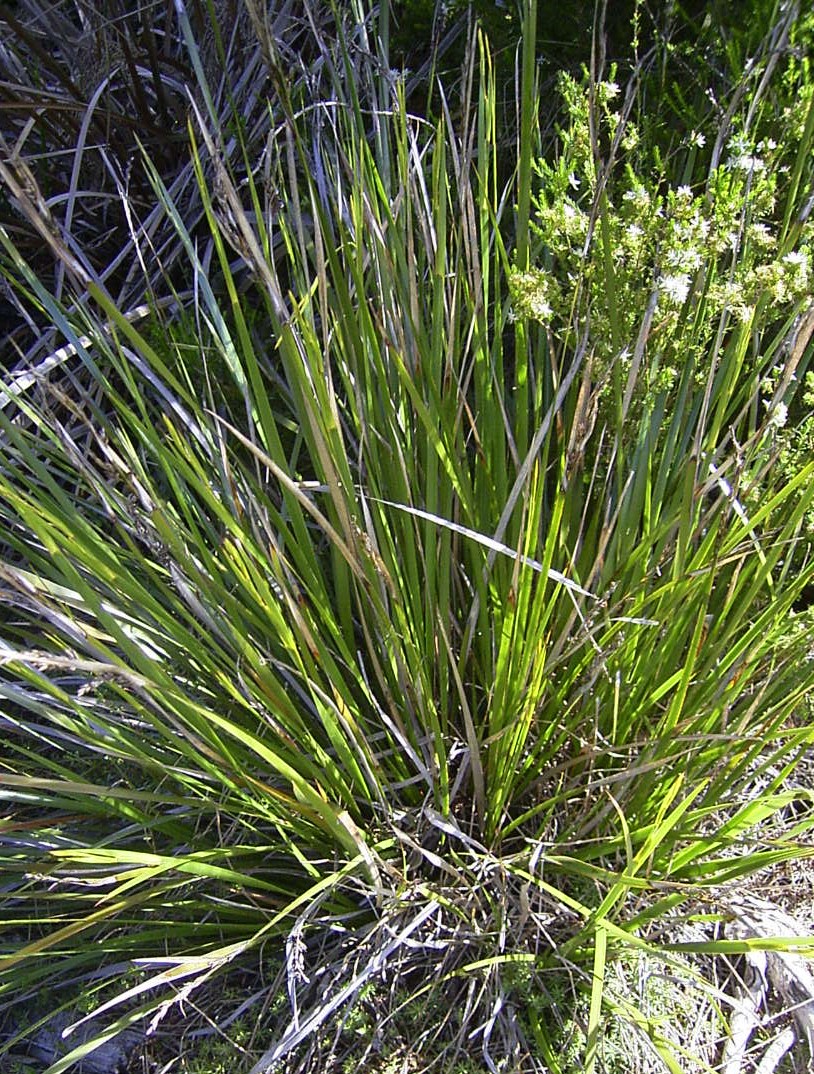Scientific Name: Lepidosperma viscidum
Common Name: sticky swordsedge
Family Classification (Clade): Monocots
Family: Cyperaceae
Threatened Species Status: Rare
Permit: It is an offence to collect, disturb, damage or destroy this species unless under permit.
Form Description: Perennial sedge with leaves overlapping at the base in two opposite rows, and glossy leaf margins.
Flowers: In a linear flower head, 8-17cm long.
Fruit: Nut – small, changing from greenish-white to pale brown when ripe; contained in dry seed heads.
Municipality
Plant Communities
Habitat Notes
Only known from a few sites near the coast in open, rocky situations, in the Midlands and east coast.
General Notes
Resistant to Phytophthora cinnamomi.
Propagation Calendar
-
Flowering Month
Jan Feb Mar Apr May Jun Jul Aug Sep Oct Nov Dec -
Seed Collecting Month
Jan Feb Mar Apr May Jun Jul Aug Sep Oct Nov Dec -
Sowing Month
Jan Feb Mar Apr May Jun Jul Aug Sep Oct Nov Dec -
Cutting Month
Jan Feb Mar Apr May Jun Jul Aug Sep Oct Nov Dec
Propagation Method
Seed Information
Seed Collection
Very difficult to grow from seed. Some species retain seed on the plant for several years. Cut the whole seed head with secateurs and allow to dry. Beat against a hard surface to extract, being careful of sharp foliage.
Seed Treatment Method
Smoke Smoke treatment improves germination in some species. Smokey products, e.g. smokey vermiculite, can be purchased and applied to the sown seed, or sown seeds can be treated directly with smoke from a source such as a drum with a fire and hose.
Seed Treatment Notes
Seed is slow to germinate and may have low viability. Seed is reputed to germinate very slowly if sown in dark and moist conditions. A combined heat-smoke treatment may be worth trying, possibly with older seed.
Cutting & Division Information
Can be propagated by division over the winter months, but plants are slow to re-establish.
